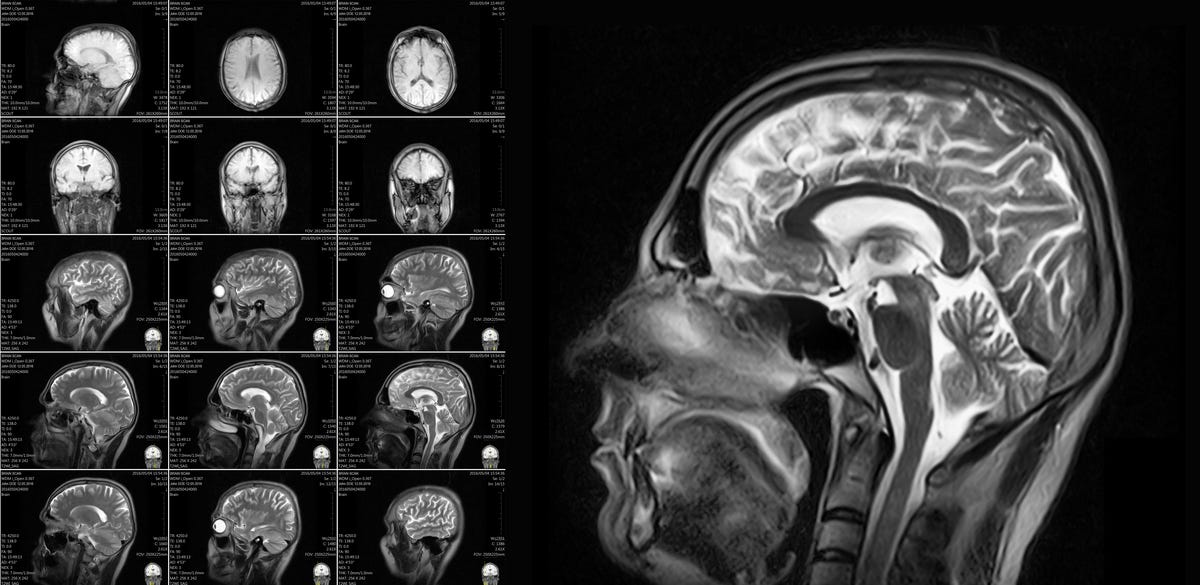Wednesday Wisdom
New Research Sheds Light on the Relationship Between Head Injuries and Psychopathic Traits in Teenage Offenders
I used to be surprised by the number of violent offenders I evaluate who have a documented history of a head injury. That was years ago; now I’m often surprised when an inmate hasn’t had one.
A new study supports my anecdotal observations. It also sheds light on some important connections between brain injuries and psychopathic traits in teen offenders. The research looked at 263 teenage boys in a maximum-security juvenile detention center in New Mexico. Over half of them (54%) had experienced at least one traumatic brain injury.
When researchers compared these kids to those without brain injuries, they found that the brain-injured group showed higher levels of three key psychopathic traits: affective traits (like lack of remorse), lifestyle traits (like impulsivity), and antisocial behaviors (like early conduct problems). Interestingly, there wasn't a difference in interpersonal traits like being manipulative or having superficial charm.
The researchers dug deeper and found that the more severe someone's brain injury was, the lower they tended to score on intelligence tests. This lower cognitive functioning then connected to higher levels of lifestyle and antisocial traits of psychopathy. It's like a chain reaction - serious head injury leads to cognitive problems, which then relates to certain psychopathic behaviors.
They also found that teens with multiple brain injuries were more likely to use multiple substances. This increased substance use was then linked to both emotional coldness and antisocial behaviors. Again, we see this pattern where brain injuries seem to set off a domino effect involving substance use that ends with more psychopathic traits.
The researchers - Michaela Milillo, Craig Neumann, and their team - were careful not to claim that brain injuries cause psychopathy. After all, it's possible that kids who were already risk-takers or aggressive might be more likely to get head injuries in the first place. But the findings do suggest that when working with troubled teens in the justice system, especially those with head injury histories, checking for cognitive issues and substance problems could be really important.
The Big Takeaways
What does this mean for us in forensic psychology and criminal justice? Three things stand out:
Brain injury assessment should probably be standard practice in juvenile justice settings, not an afterthought. With over half of these teens having TBIs, we're missing a huge piece of the puzzle if we ignore this.
When we do identify brain injuries in these teens, targeted interventions addressing cognitive deficits and substance use might help reduce psychopathic traits and potentially reduce reoffending.
Prevention is key. These findings suggest that early TBI prevention programs and immediate intervention after injuries could potentially help keep vulnerable kids from developing these traits and entering the justice system in the first place.
Effective Intervention Approaches
When it comes to intervention, there's an important question of where to focus our efforts. While cognitive rehabilitation has some evidence behind it (attention training, memory exercises, etc.), directly targeting the resulting behavioral problems is likely more efficient and effective in juvenile justice settings.
The most promising approaches focus on:
Emotional regulation skills - teaching teens to identify emotions and use specific strategies to manage them
Impulse control techniques - implementing stop-and-think exercises and consequence evaluation
Substance use treatment - addressing a key mediator identified in the study
A two-pronged approach makes the most sense: accommodate for cognitive limitations while directly teaching behavioral skills. For example, if a teen has attention problems from a TBI, we might adapt how we teach emotional regulation rather than just doing attention training exercises.
The challenge is that each teen's TBI pattern is unique - different areas affected, different severity, and different age of injury. That's why individual assessment followed by targeted intervention is so critical, rather than a one-size-fits-all approach.
The bottom line: The adolescent brain is still developing, especially in areas controlling impulse and emotion. Brain injuries during this critical period seem to disrupt this development in ways that can increase psychopathic traits – and that's something we need to take seriously in both prevention and treatment.
Source: Milillo, M. M., Neumann, C. S., Maurer, J. M., Jin, C., Commerce, E., Reynolds, B. L., Harenski, C. L., & Kiehl, K. A. (2023). Association Between Traumatic Brain Injury and Psychopathic Traits Among Justice‑Involved Adolescents. Research on Child and Adolescent Psychopathology.





I wonder about the directionality of head injuries and psychopathology. Psychopaths often take risks, including physical risks, at a greater rate than the average person. Therefore, they might have more head injuries and more serious head injuries because of this. It would be interesting to use clumsy children as a control group.
While very severe head injuries have been documented to dramatically change people's personalities (Phineas Gage), it is possible that we could work with unusually fearless children to help them develop empathy, and if this is not possible in developping psychopaths, help them learn to conform their behaviors to be more prosocial.
A great article with relevant insight. Kind regards from Miriam in Melbourne Australia